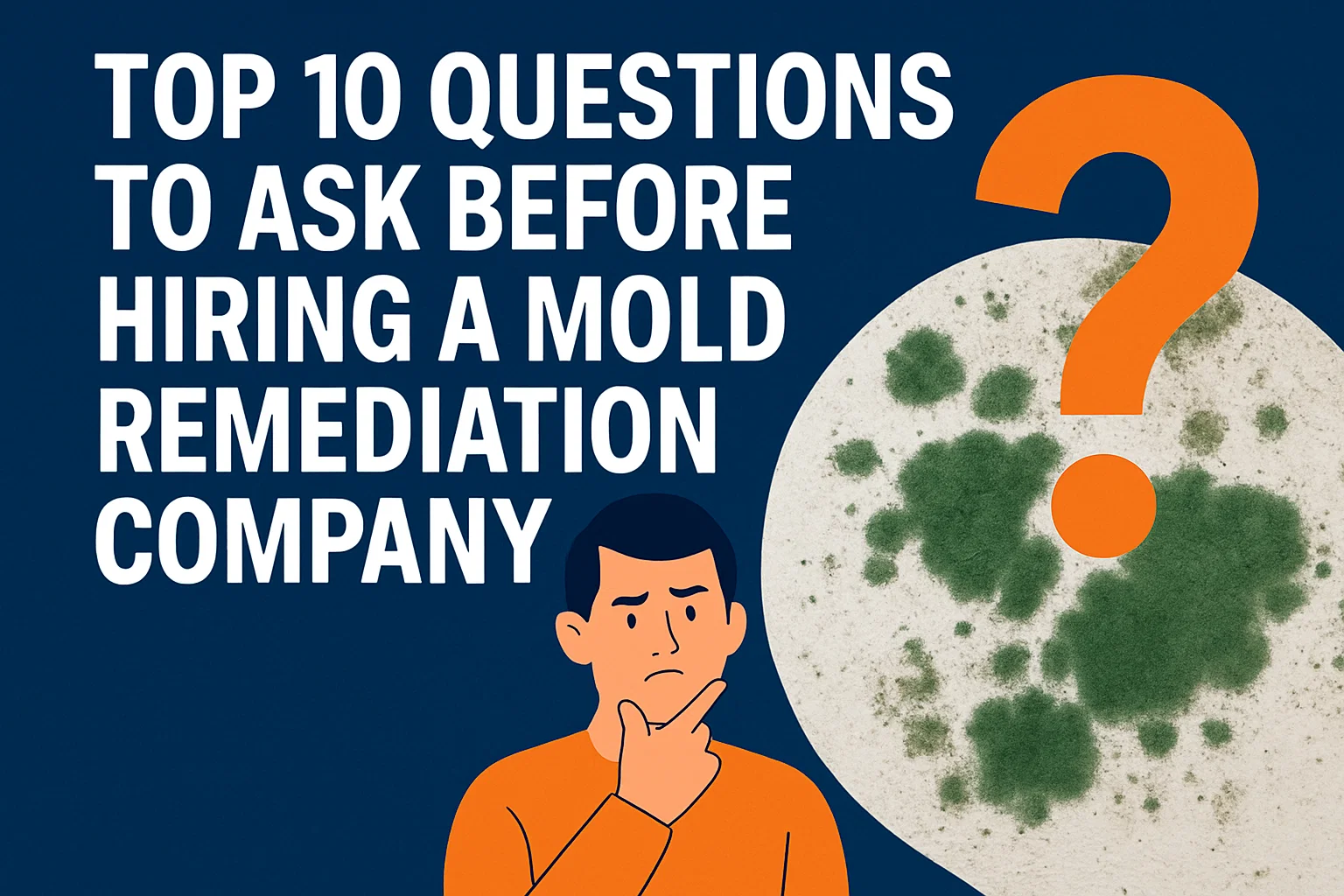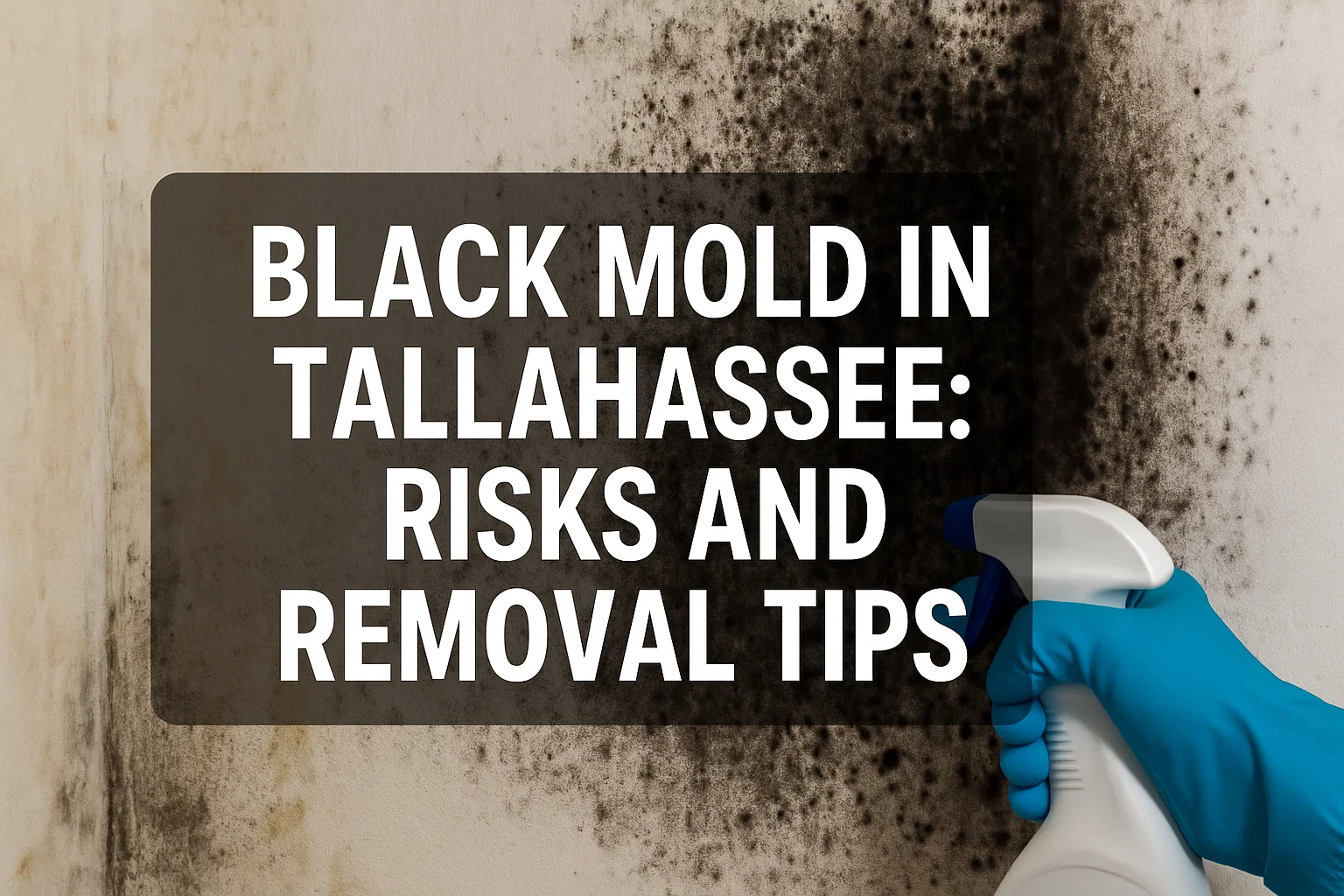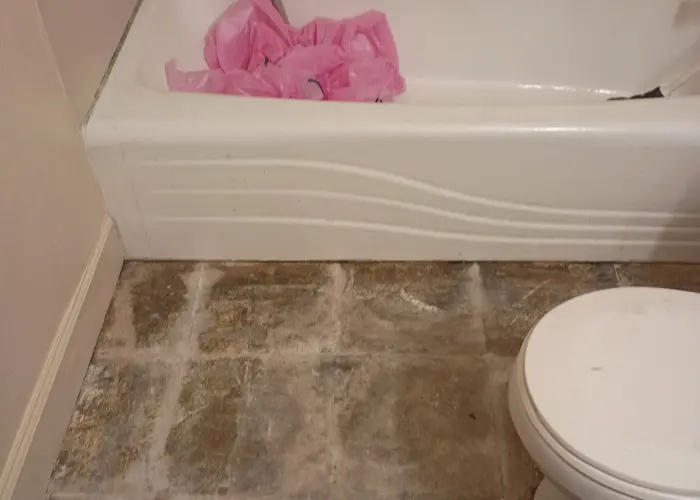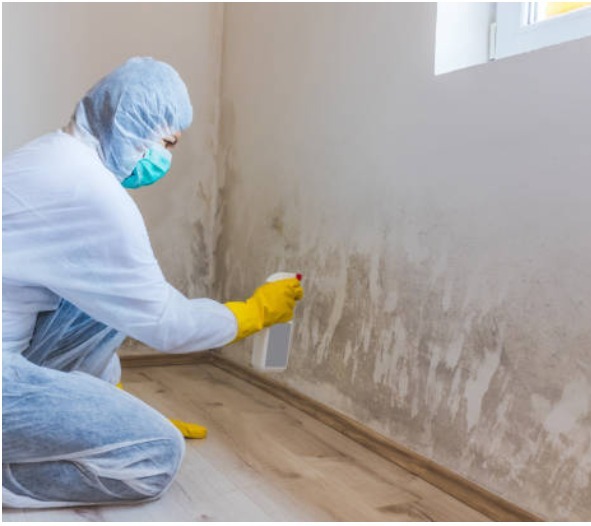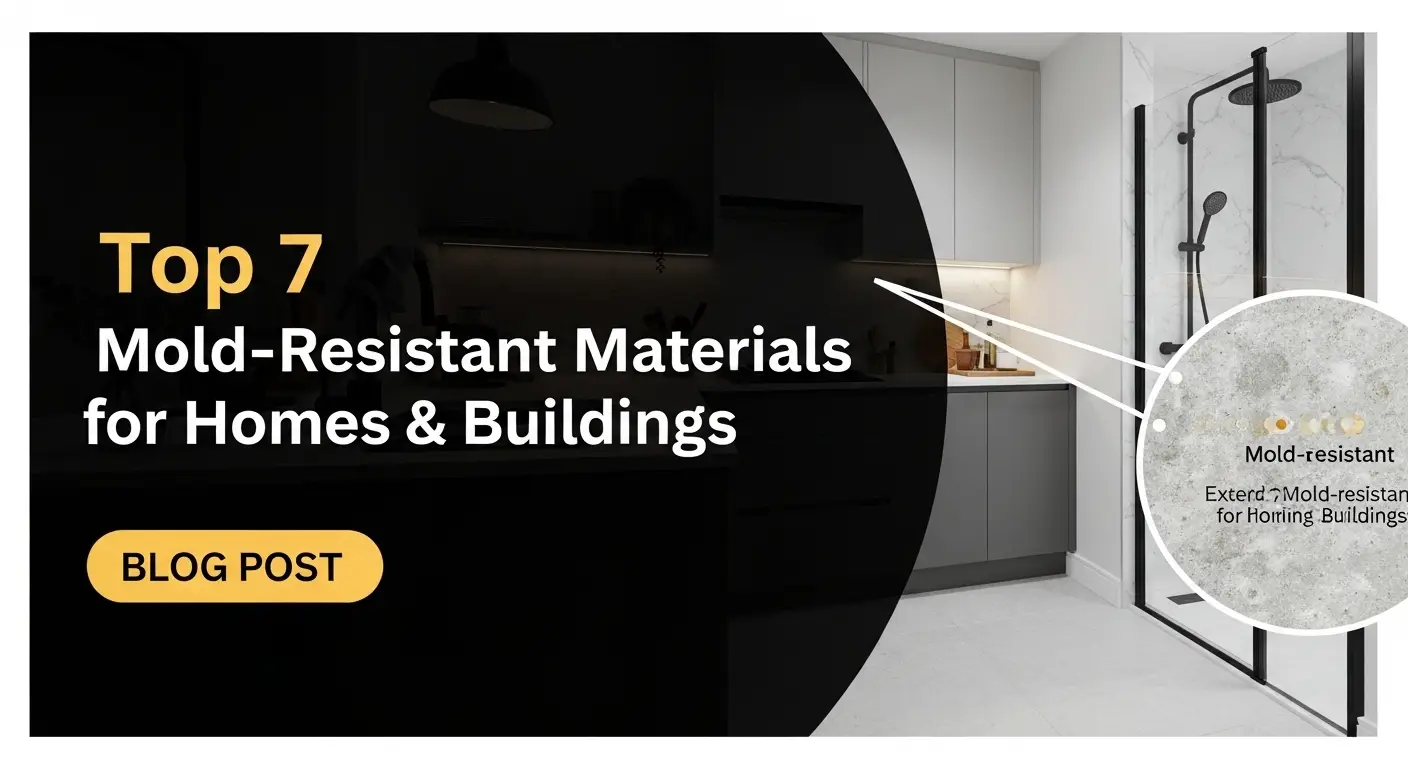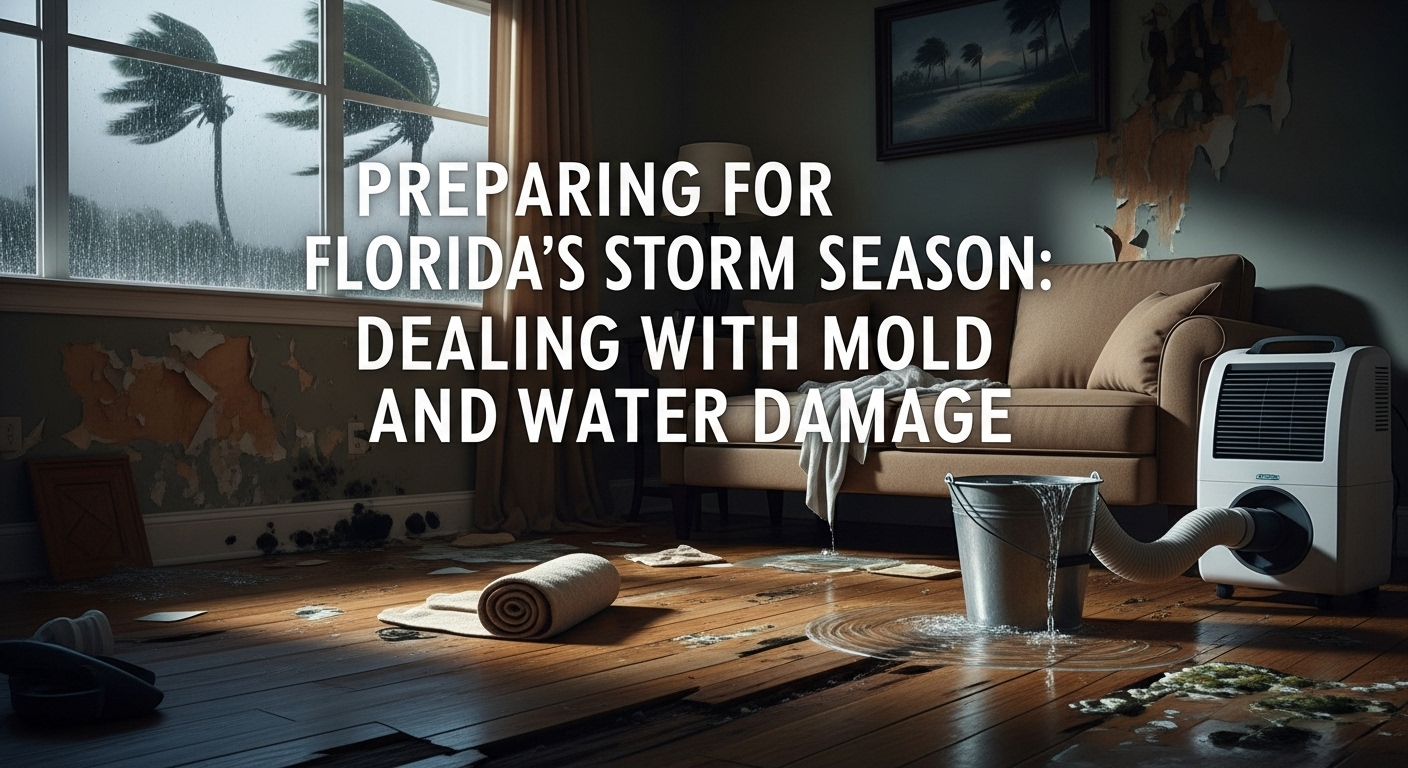Florida’s tropical climate is a perfect breeding ground for mold. With its high humidity, frequent rainfall, and hurricane seasons, mold can grow in homes, schools, offices, and nearly any indoor space. Most residents don’t realize how fast mold spreads or how harmful it can be to human health. What starts as a small patch behind a wall can become a serious threat in just days.
This guide will walk you through the Hidden Health Risks of Mold exposure, how it grows, how to test for it, and — most importantly — how to prevent it. Mold might be invisible, but it can still harm your health in a big way. Let’s talk about it in detail.
What is Mold ?
Mold is a type of fungus that grows in moist environments. It spreads by releasing tiny spores into the air. These spores float around and land on damp surfaces—like walls, ceilings, or even furniture—where they can grow into mold colonies.
Why is it a Health Risk in Florida?
Unlike dry regions, homes in Florida are always at risk. The average humidity levels in Florida often stay above 70%, especially during the summer and hurricane season. Mold doesn’t need standing water to grow. Just slightly damp conditions—like condensation on windows, small leaks under sinks, or improperly ventilated bathrooms—can be enough.
One of the most concerning molds in Florida is Stachybotrys chartarum, better known as black mold. This mold produces mycotoxins, toxic substances that can severely affect the brain and lungs. Black mold often hides behind walls, under floors, and in air ducts, making it harder to detect until symptoms appear.
Health organizations, including the EPA and CDC, warn about prolonged mold exposure, especially in children, the elderly, and people with asthma or immune issues.
Health Risks of Mold Exposure
Mold exposure isn’t just uncomfortable—it can seriously affect your health. Mold can trigger allergies, damage the lungs, and in some cases, affect the brain and immune system. Let’s break down how mold affects the body, especially for those with existing health issues.
Respiratory Issues Caused by Mold
Breathing in mold spores can irritate your lungs. Over time, this can lead to Asthma attacks, Wheezing, Chronic coughing, and Shortness of breath, especially after physical activity. Children and older adults are more likely to develop respiratory symptoms. If you already suffer from conditions like asthma or bronchitis, mold can make them worse. According to the American Lung Association, long-term exposure to mold can even cause new respiratory illnesses in healthy people.
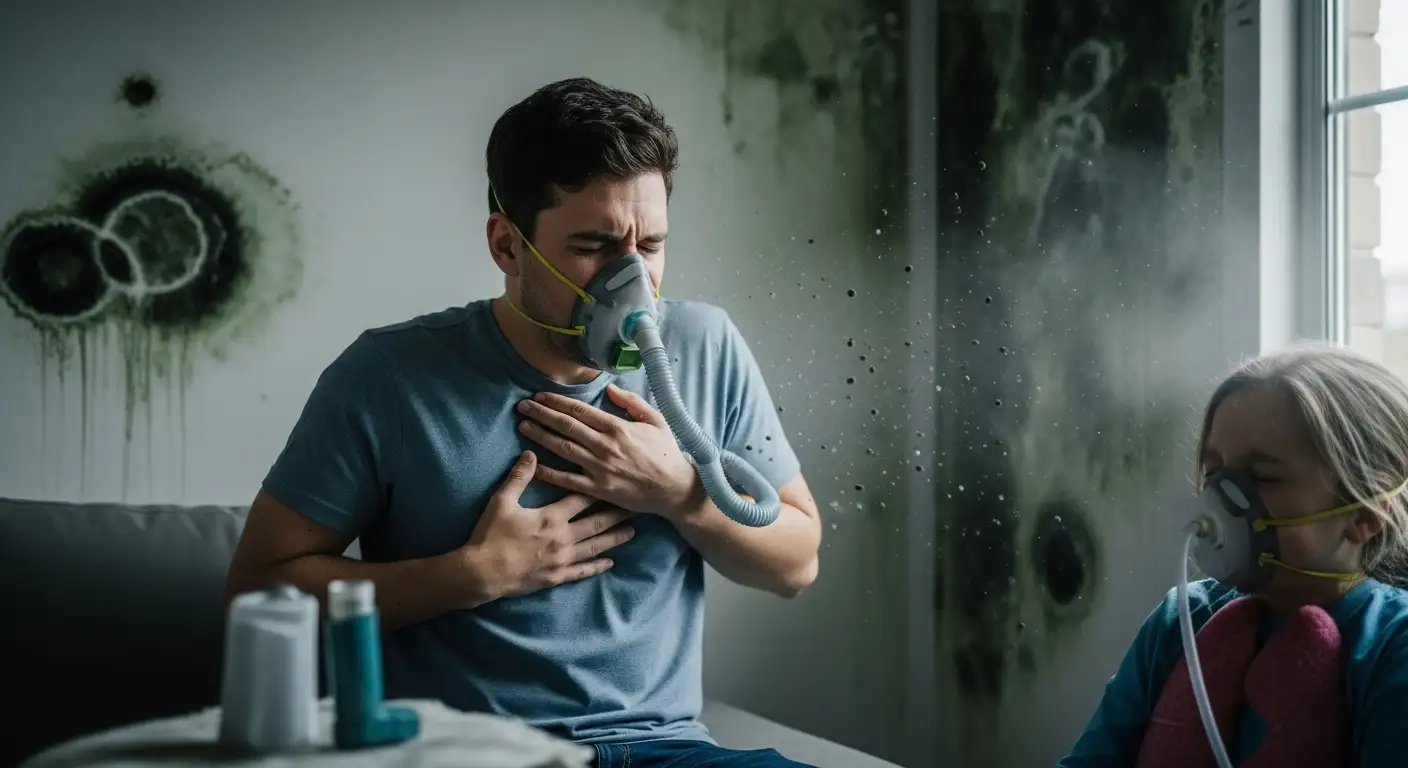
Allergic Reactions to Mold
Some people are sensitive to mold spores, which can trigger allergic reactions similar to seasonal allergies. Symptoms may include:
These symptoms may feel like a common cold but tend to persist or worsen indoors. In homes with hidden mold, residents often feel better when they leave the house—then worse again when they return.
Sinus Infections and Chronic Respiratory Problems
Mold can inflame the sinuses and trigger repeated infections. People with mold allergies are especially vulnerable. Medical journals like the Journal of Occupational and Environmental Medicine have documented increased sinus infections in mold-contaminated buildings.
Aggravation of Pre-Existing Health Conditions
If you have a condition like COPD, asthma, or weakened immunity, mold exposure can cause flare-ups. Mold doesn’t just trigger symptoms—it may make recovery harder.
The immune system may go into overdrive, leading to chronic inflammation. Over time, this can weaken your ability to fight off other illnesses.
The Florida Department of Health advises that people with compromised immune systems should avoid staying in mold-contaminated homes altogether.
Mold’s Impact on Children and Vulnerable Populations
Infants, seniors, and those with health conditions face the highest risks. For babies, mold exposure has been linked to acute pulmonary hemorrhage (bleeding in the lungs), according to studies cited by the National Center for Biotechnology Information.
In the elderly, exposure can worsen conditions like arthritis, COPD, or heart disease. And for those with cancer or autoimmune disorders, mold can cause serious complications.
How Mold Grows and Spreads?
Mold spreads very fast. It often starts small but can quickly take over walls, ceilings, and floors if ignored. Understanding how mold grows and spreads is the first step in stopping it.
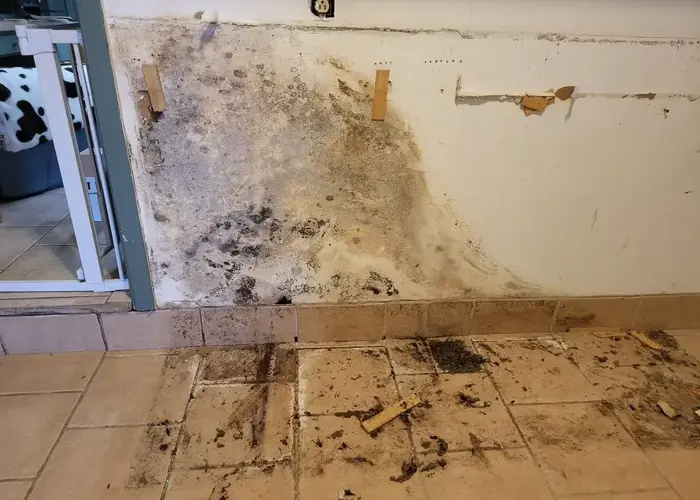
Conditions that Facilitate Mold Growth in Florida Homes
Mold spores need only three things to grow: moisture, warmth, and a food source. Unfortunately, Florida homes often provide all three.
Here’s how:
Materials like drywall, carpet, wood, and insulation absorb moisture easily. If not dried quickly, mold starts to grow in as little as 24 to 48 hours.
How Mold Spreads Within Homes and Buildings
Once mold starts growing, it releases microscopic spores into the air. These spores are invisible but travel easily through the air ducts, Ceiling fans, clothes, and pets.
When spores land on nearby surfaces like walls, furniture, and carpets, they begin growing if the environment is right. This is how mold can silently move from one room to another, or even from one apartment unit to the next in multi-family buildings. Even if the mold is cleaned in one spot, if spores are still floating in the air, it can come back quickly.
The Lifecycle of Mold
The life cycle of mold has four main stages:
Mold begins as a tiny spore, a seed-like particle. When it lands on a damp surface, it starts to grow roots (called hyphae) and forms a colony. As the colony matures, it produces more spores and spreads. Each cycle takes only a few days. That’s why fast cleanup and moisture control are critical.
Tip: Use a dehumidifier in high-moisture areas and check for leaks regularly, especially after storms or heavy rains.
Mold in Commercial Spaces: Florida Business Owners Beware
Mold problems in commercial buildings can quickly lead to financial loss, health complaints, and even legal trouble. In Florida, where high humidity and storm damages are common, business owners must be proactive about mold prevention and remediation.
Symptoms of Mold Exposure
Mold exposure can cause a wide range of health issues. The symptoms often start out mild and can be mistaken for seasonal allergies or a cold. But over time, they may worsen, especially in people who are sensitive or exposed daily. Recognizing the symptoms early can help prevent serious health problems.
Common Symptoms of Mold Exposure
The most frequent symptoms of mold exposure affect the respiratory system, skin, and sometimes even the nervous system. Some people feel sick shortly after entering a mold-infested space, while others develop symptoms slowly over weeks or months.
If these symptoms improve when you’re away from home or work—and return when you’re back—mold might be the cause.
Is Black Mold Particularly Harmful in Florida?
In Florida’s hot, wet climate, black mold—Stachybotrys chartarum—is a serious concern. It thrives in damp indoor environments like flooded drywall, leaky ceilings, and unventilated HVAC systems. While not all mold is toxic, black mold can be much more harmful than other types, especially with prolonged exposure.
The Risks of Black Mold and Its Toxicity
What makes black mold especially dangerous is its ability to produce mycotoxins—toxic substances that can cause severe physical and neurological symptoms. These toxins are released into the air and can affect people even when the mold itself is hidden.
Recognizing Black Mold Symptoms
These symptoms often point to long-term or high-level exposure. Black mold usually grows in hidden areas—inside walls, behind tiles, or in air ducts—making it harder to find until the symptoms become noticeable. Symptoms of black mold exposure include:
Important: If multiple people in your home or office show these symptoms, especially children or seniors, seek professional help for mold inspection immediately.
Testing for Mold and Mold-Related Health Problems
You can’t always see or smell mold. That’s why mold testing is crucial—both in your home and your body—especially if you or your family are showing symptoms.
How to Test for Mold in Your Home
There are two main ways to test for mold at home: DIY kits or professional inspections.
1) DIY Mold Testing Kits:
DIY mold testing kits can be found at hardware stores or online, which allow homeowners to check for mold presence in their spaces. These kits typically involve taking surface samples or setting out spore traps to collect potential mold spores.
2) Professional Mold Inspections:
Professional mold inspections are conducted by certified inspectors who utilize advanced tools such as infrared cameras, moisture meters, and air sampling pumps to detect mold presence. Professional testing is often more reliable, especially in larger homes or commercial spaces.
Mold Allergy and Exposure Tests
If you’re experiencing symptoms and suspect mold is the cause, your doctor may suggest allergy testing. These tests help identify how your body reacts to mold spores.
These tests can confirm if mold is causing symptoms like coughing, fatigue, or rashes—and guide your treatment plan.
When to See a Doctor?
If you’re experiencing any of the following, it’s time to consult a healthcare provider:
Mention any recent water damage in your home, especially if symptoms started afterward. Also share if other household members feel sick—it could point to a shared environmental cause. Many doctors in Florida are familiar with mold-related illness, especially in coastal or flood-prone areas.
Treating Mold Exposure Health Issues
Once you’ve been exposed to mold, symptoms can range from mild to severe. The good news is that there are effective treatments available. Some focus on relieving symptoms, while others aim to help the body recover from long-term mold-related illness. Doctors typically treat mold exposure based on the symptoms. There’s no single cure, but the right combination of medications can bring fast relief. Common medical mold treatments include:
Doctors may also recommend limiting exposure by improving air quality at home or taking time away from the affected environment.
Natural Remedies and Detox for Mold Exposure
Some people look to natural detox methods to support recovery. These don’t replace medical treatment but may help reduce symptoms over time.
Be cautious with over-the-counter supplements. Always consult a healthcare provider before starting any detox program, especially if you have chronic health conditions.
Preventing Mold Growth in Florida
In Florida, keeping mold out of your home requires more than just cleaning—it’s about staying ahead of moisture. The state’s year-round humidity, storm seasons, and high rainfall make mold prevention a constant task. But with the right habits and tools, you can keep your space dry, safe, and mold-free.
Preventing Mold in High-Risk Areas
Some rooms are more vulnerable to mold than others. Bathrooms, kitchens, attics, and basements often trap heat and moisture, creating ideal breeding grounds. Here’s how to reduce mold risk in these high-risk areas:
Homeowners should also pay close attention to crawl spaces and laundry rooms, where airflow is often limited.
Professional Mold Remediation and Prevention Services
If you’ve already had a mold issue—or want to prevent one—hiring a certified mold remediation specialist is a smart move. Bellow are the benefits of hiring a professional:
Choose a contractor certified by the Florida Department of Business and Professional Regulation (DBPR) or affiliated with national organizations like IICRC (Institute of Inspection Cleaning and Restoration Certification).
Conclusion:
Mold is more than just an eyesore—it’s a silent health threat that thrives in the humid, storm-prone environment of Florida. From chronic coughing and skin rashes to neurological symptoms and severe allergic reactions, mold exposure can take a serious toll on your well-being. Don’t wait until it’s too late—take action now to protect yourself and your loved ones.
FAQs
What are the symptoms of mold exposure?
Common symptoms include coughing, sneezing, nasal congestion, itchy eyes, skin rashes, fatigue, and headaches. In severe cases, especially with black mold exposure, you may experience memory problems, dizziness, or chronic respiratory issues.
How can I tell if mold is toxic?
You can’t tell by looking alone. Toxic mold, like Stachybotrys chartarum (black mold), releases mycotoxins, but not all black or green mold is dangerous. The safest way to know is through professional testing.
Can mold cause long-term health problems?
Yes. Prolonged mold exposure can lead to chronic sinus infections, lung inflammation, fatigue, and neurological symptoms. It may also worsen asthma or weaken your immune system.
Should I hire a professional for mold removal?
In most cases, yes—especially if the affected area is larger than 10 square feet, or if black mold is involved. Professionals have the tools to remove mold safely and prevent it from returning.

